Sunday, May 25, 2008 | 2 a.m.
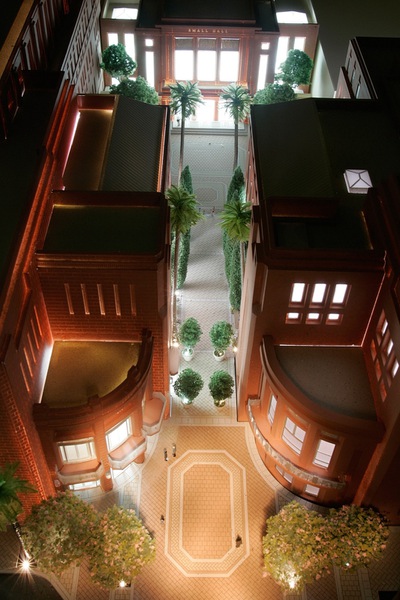
A traditional approach: A pedestrian walkway will connect parts of the Smith Center for the Performing Arts across from the Clark County Government Center, creating an urban core for the 61-acre Union Park redevelopment. The center will provide a stark contrast to Frank Gehry's Lou Ruvo Brain Institute.
On the Strip, a giant black glass pyramid sits next to a fairy tale-inspired castle with brightly colored turrets. A faux-Deco rip-off of Manhattan’s skyline stands down the street from respectful if miniaturized copies of the Eiffel Tower and the Arc de Triomphe.
Is this jarring mishmash of architectural styles necessarily a bad thing? To the tens of millions of tourists who flock here annually, the answer apparently is no.
Yet this is one of the questions being asked of downtown’s rising urban center, Union Park, and two of its anchor structures, the Lou Ruvo Brain Institute and the Smith Center for the Performing Arts, which feature radically different designs.
“If there’s a great yin and yang architectural story, it’s Ruvo and Smith,” said Myron Martin, president of the Las Vegas Performing Arts Center Foundation.
On the southwest corner of the 61-acre site, at Bonneville Avenue and Grand Central Parkway, the park will feature the Brain Institute, designed by nationally renowned “starchitect” Frank Gehry.
There’s a danger in nonarchitects’ trying to describe one of Gehry’s buildings. But the institute, in which scientists and doctors will research cures for Alzheimer’s and other brain diseases, is a five-story building that looks from the rear like a series of asymmetrical piles of tan boxes. At its front, steel and glass grids twist and roll in different directions, seemingly at random.
To some the clashing, almost violent angles might evoke visions of urban wartime wreckage. To others the design — even if Gehry’s initial inspiration admittedly was a crumpled up piece of paper — is nothing short of mesmerizing.
The Institute broke ground in February 2007 and the $74 million building is taking shape. Exposed steel beams, some straight and some curved, can be seen shooting off at odd angles at what will be the front of the building.
The $360 million Smith Center isn’t scheduled to break ground until late this year or early next, with a rough completion target date of 2011.
But designs show the center, to be located cater-cornered from the institute, about half a block away, will look dramatically different.
Designed by architect David Schwarz, the Smith Center draws on classical and modern influences. The earth-red metaquartzite limestone center will be composed of three buildings. A carillon bell tower will rise from the main building, which will include a 2,050-seat performance hall. A courtyard in the middle will link that building with a smaller hall and an educational complex.
Las Vegas Mayor Oscar Goodman visited Gehry’s studio in Los Angeles in 2006 and not long after approved the design of the Ruvo Institute. He said he’s delighted not just with how it looks on its own, but in comparison with nearby buildings, including the Smith Center, as well as the dark red, sand castle-inspired Clark County Government Center and the hulking, windowless World Market Center.
“ ‘This is no holds barred,’ ” Goodman said he initially told Gehry. “ ‘It’s Vegas, you’re a genius,’ ” so the field is wide open, he said.
Goodman did not have veto power over the Smith Center’s design but said he loves that design as well, though he knew it would present a stark visual contrast to the institute.
“I view it as a plus,” Goodman said of the differing architectural styles. “It creates something distinctive and unique, and it will become a tourist destination for people with intellect. Anybody interested in architecture will love it.”
Gehry’s buildings have been criticized for not blending in with local surroundings and for creating functionless forms that, while perhaps fun to look at, waste resources.
His buildings, from museums in Seattle and Bilbao, Spain, to the Walt Disney Concert Hall in downtown Los Angeles, often become tourist attractions in and of themselves.
According to some local critics, Gehry might play well in culturally hip towns like Seattle and Los Angeles, but Vegas isn’t quite ready for him.
One local public radio commentator savaged Gehry’s institute design after it was unveiled, claiming it was “absolutely incongruous in the same setting” with nearby buildings.
KNPR commentator Jeff Burbank, author of several books on Las Vegas, said in early 2006 that the institute would prove to be “an absurd eyesore that will depict this community as an uncloaked emperor desperate to purchase respectability with a statement the meaning of which it has no idea.”
“Problem is,” Burbank said, “the out-of-context, hodgepodge approach that city planners seem to endorse for the 61-acre Union Pacific site shows just how confused they are about what this still-evolving town should reveal to the world, and about itself.”
Yet some prominent architecture critics disagree.
After viewing sketches of both buildings and the overall Union Park site, Thomas Hanrahan, dean of the Pratt Institute’s School of Architecture in New York City, said Union Park’s design “looks pretty successful” from several standpoints.
The Gehry-designed institute will present a dramatic gateway to Union Park, Hanrahan said. He notes that the more eccentric parts of the building face outward, away from the rest of the park’s buildings, which should help draw folks into the park.
The nearby Smith Center and the adjacent Symphony Park represent a “tighter, more traditionally urban core” for the whole site, he said. “It should be a great set of public urban spaces.”
The other side of Union Park, farther to the north and east, also will feature several visually intriguing projects, including the World Jewelry Center, which will include a sleek, 50-story-plus office building, a boutique hotel named after celebrity chef Charlie Palmer and a hotel and casino.
From the start, those concerned about whether the Smith Center would clash or mesh with the Ruvo Brain Institute recognized one immutable fact: Virtually the only kind of building that would not clash with a nearby Gehry project would be another Gehry building.
On balance, Performing Arts Center Foundation leader Martin said he believes the two structures, architecturally worlds apart though they are, will work well together and with the other components of Union Park.
“I’m thrilled at the juxtaposition,” Martin said.
Maureen Peckman, chief operating officer of the Keep Memory Alive organization, the institute’s holding company, sees a Las Vegas perspective to the question of whether the Ruvo might or might not blend with the Smith Center and other nearby structures.
“This is a town where we do things that have never been done before,” Peckman said.
“The thought that you have to look like your neighbor just doesn’t speak to the DNA of Las Vegas,” she said. “We’re a different breed of cat here. We celebrate being different.”
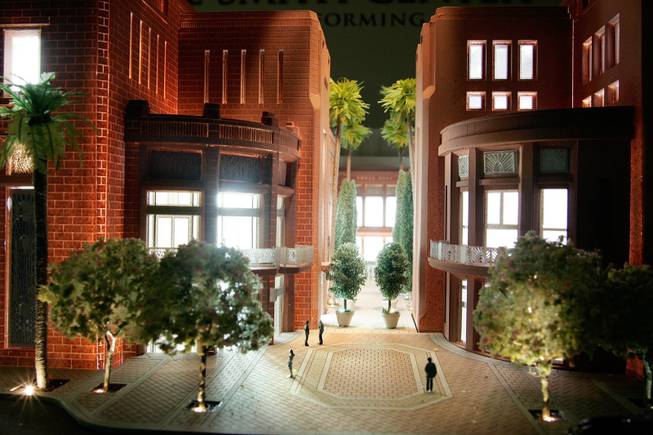
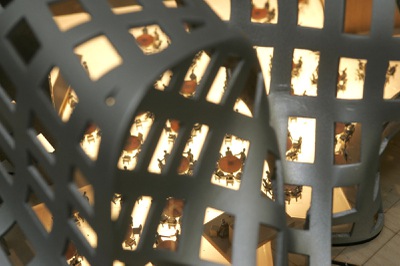
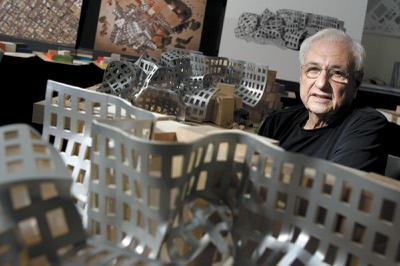
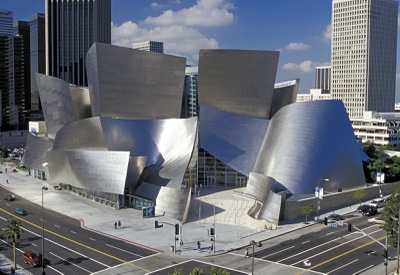

Join the Discussion:
Check this out for a full explanation of our conversion to the LiveFyre commenting system and instructions on how to sign up for an account.
Full comments policy